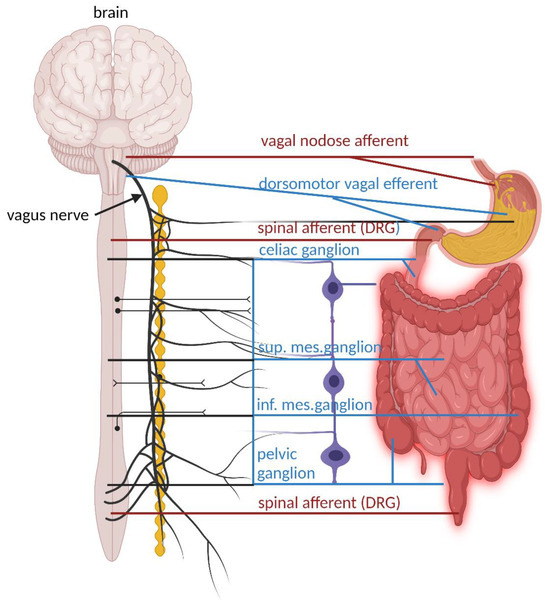Enteric Nervous System (ENS)

Enteric Nervous System (ENS): Structure, Function, and Clinical Significance
The enteric nervous system (ENS) is a vast network of neurons embedded in the lining of the gastrointestinal (GI) tract, stretching from the esophagus to the rectum. Often called the “second brain,” the ENS is a major division of the autonomic nervous system and is uniquely capable of controlling digestive functions independently of the central nervous system (CNS)145.
Structure
- Neuronal Complexity: The ENS contains between 200 and 600 million neurons—more than the spinal cord15.
- Two Main Plexuses:
- Neuron Types: Includes sensory (afferent), motor (efferent), and interneurons, allowing the ENS to sense, integrate, and respond to changes in the gut environment15.
Functions
- Autonomous Control: The ENS can coordinate reflexes and GI behavior—such as peristalsis, secretion, and blood flow—without input from the brain or spinal cord1345.
- Neurotransmitters: Uses many of the same neurotransmitters as the CNS, including acetylcholine, serotonin, and dopamine. Over 90% of the body’s serotonin and about 50% of its dopamine are found in the gut4.
- Sensory Processing: Detects chemical and mechanical stimuli (e.g., food composition, gut stretch) and can trigger appropriate digestive responses, including protective reflexes like vomiting or diarrhea15.
- Gut-Brain Communication: While capable of independent function, the ENS communicates bidirectionally with the CNS via the vagus nerve and sympathetic pathways, forming the gut-brain axis135.
- Plasticity and Learning: The ENS can adapt to dietary changes or injury, showing a degree of plasticity similar to the CNS1.
Clinical and Research Significance
- Digestive Disorders: ENS dysfunction is linked to motility disorders (e.g., irritable bowel syndrome, gastroparesis) and functional GI diseases24.
- Neurological Connections: The ENS shares neurotransmitters and signaling pathways with the CNS. Pathological processes in the CNS (e.g., Parkinson’s, Alzheimer’s) can have enteric manifestations, and vice versa25.
- Microbiome Interaction: The ENS interacts closely with gut microbiota, influencing both digestive and neurological health. Changes in gut flora have been associated with mental health and neurodegenerative conditions15.
- Immune and Protective Roles: The ENS helps monitor gut defense and can detect harmful bacteria, triggering protective responses such as vomiting15.
Summary Table
| Feature | Details |
|---|---|
| Location | GI tract wall (esophagus to rectum) |
| Main Plexuses | Myenteric (motility), Submucosal (secretion, blood flow, sensory) |
| Neuron Types | Sensory, motor, interneurons |
| Key Functions | Peristalsis, secretion, blood flow, reflexes, gut-brain communication |
| Neurotransmitters | Acetylcholine, serotonin, dopamine, and others |
| Autonomy | Functions independently of CNS, but communicates via gut-brain axis |
| Clinical Relevance | Digestive and neurological disorders, microbiome interactions |
Consult with Our Team of Experts Now!
At DrStemCellsThailand (DRSCT)‘s Anti-Aging and Regenerative Medicine Center of Thailand, we emphasize comprehensive evaluations and personalized treatment plans of Cellular Therapy and Stem Cells for managing various health conditions. If you have questions about Enteric Nervous System (ENS) or would like more information on our services, consult with our experts today!
Consult with Our Team of Experts Now!
In summary:
The ENS is a highly complex, semi-autonomous neural system essential for digestive function and closely linked to both the brain and the immune system. Its dysfunction can have profound effects on both gastrointestinal and neurological health1245.
References:
1 Wikipedia – Enteric nervous system
2 PMC – The enteric nervous system in gastrointestinal disease etiology
3 Queensland Brain Institute – Enteric nervous system
4 Physiopedia – Enteric Nervous System (ENS)















